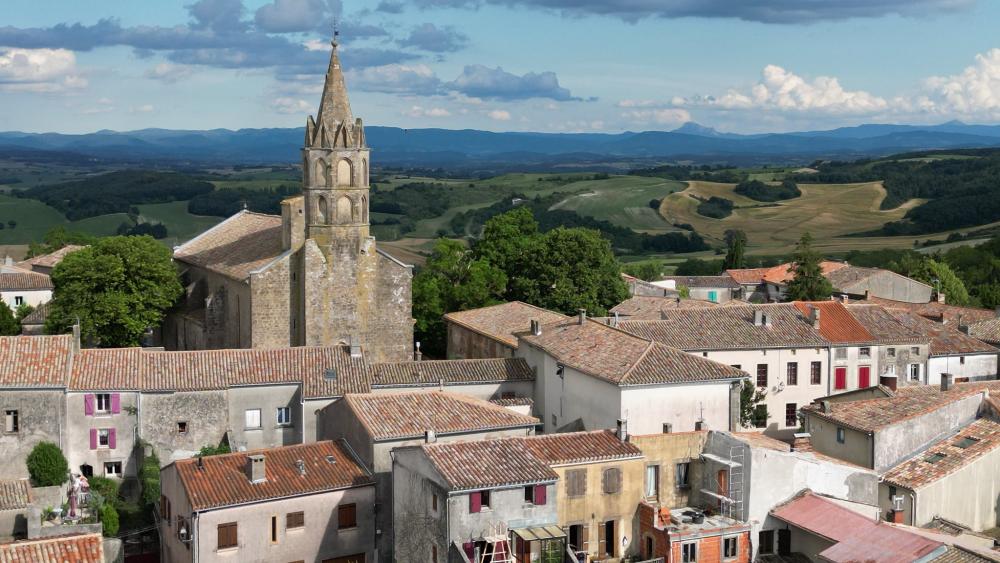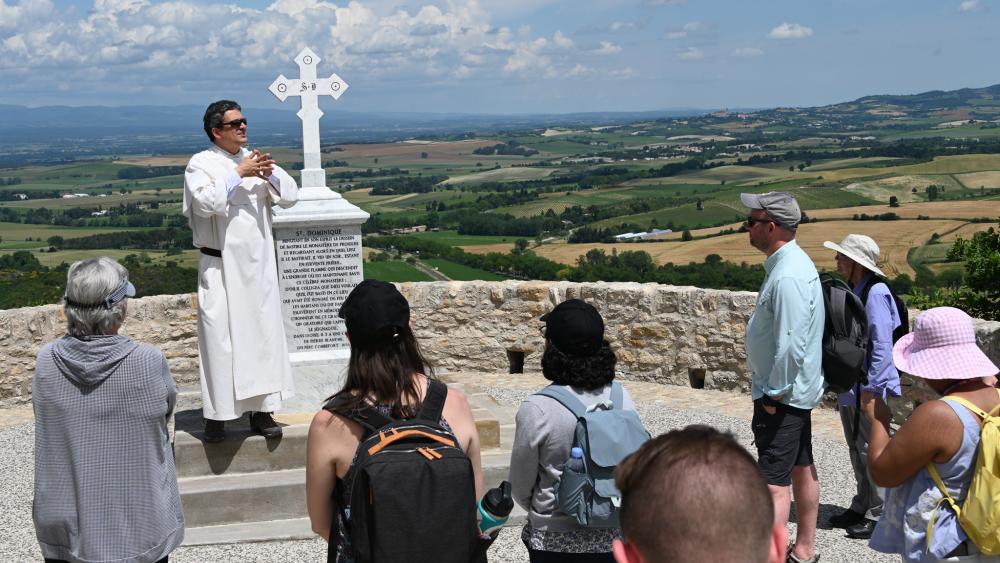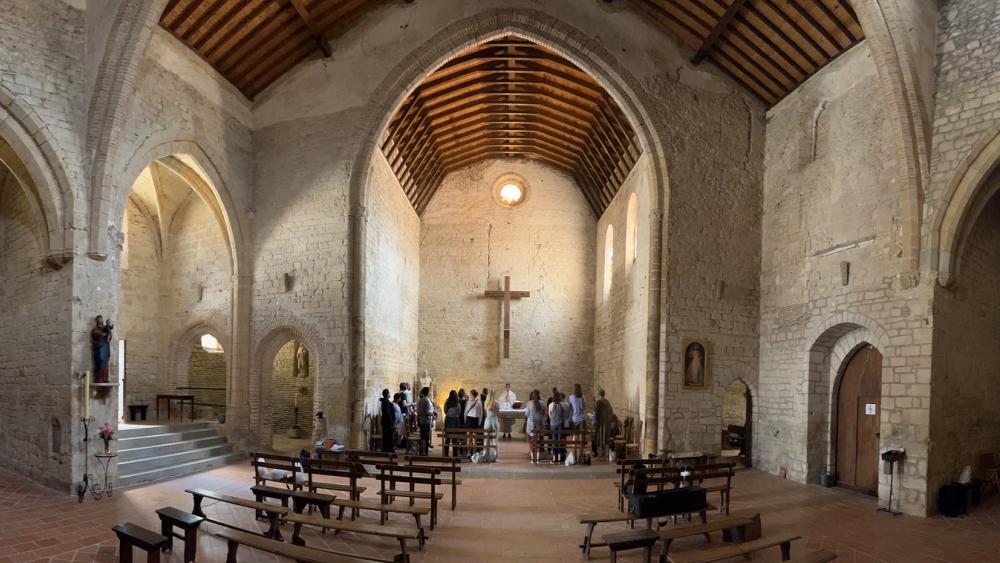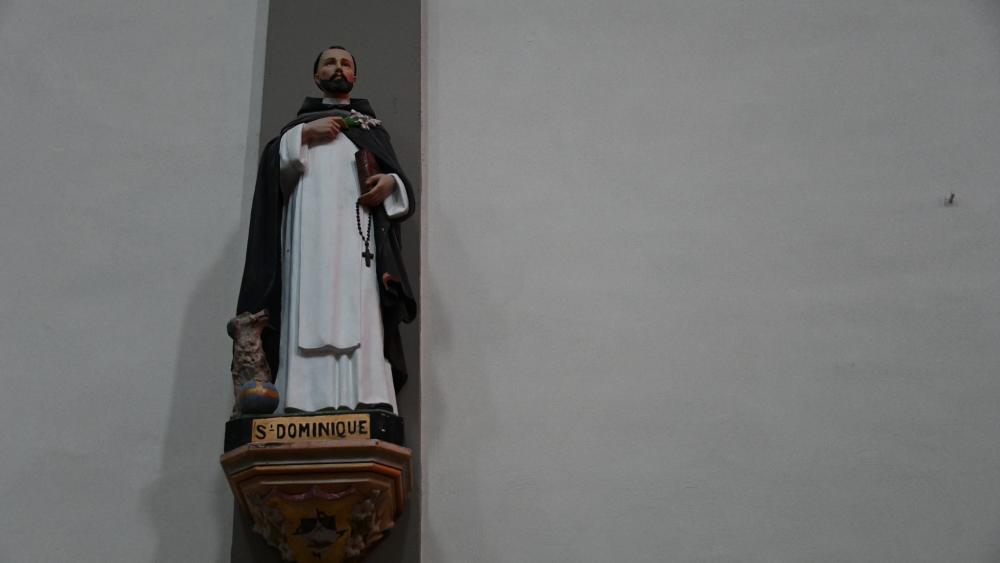Reflecting on Fanjeaux: Staff Members Share Experiences of Walking in the Footsteps of St. Dominic
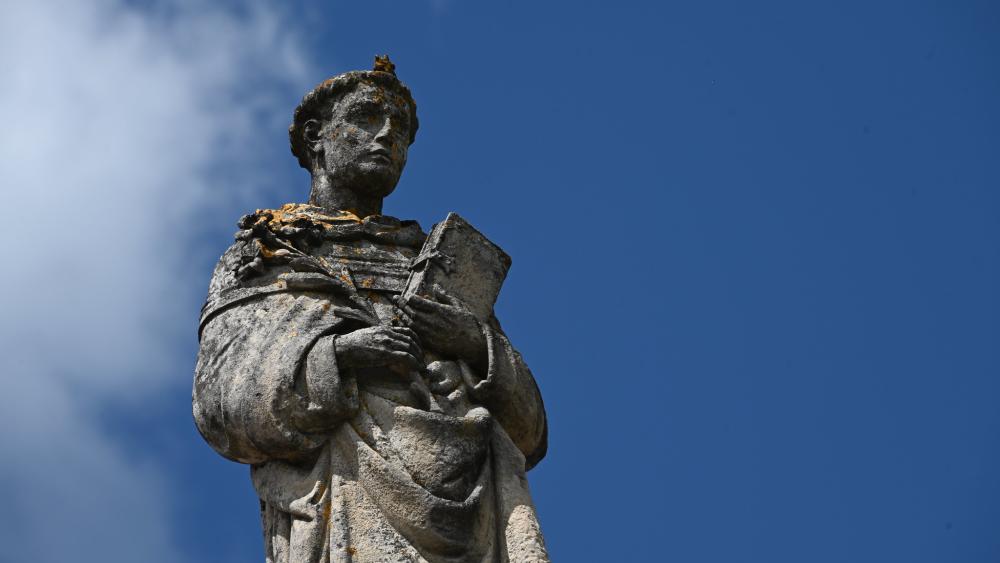
Fresh off their travels to the lands of St. Dominic, three Dominican University staff members are sharing some of their experiences.
Sponsored by the Dominican Higher Education Council, the trip, which took place June 2-14 in the Fanjeaux area of Southwest France, brought together students, staff, faculty, administrators and sisters from several Dominican institutions for tours of sites significant to St. Dominic and the early history of the Order of Preachers, which he founded. The trip gave Dominican University’s travelers a chance to explore, learn and reflect on the Dominican mission — a very special and unique experience.
The next opportunity for Dominican University faculty and staff to travel to Fanjeaux is slated for 2025.
Participating in this year’s pilgrimage were Christopher Allison, director of McGreal Center for Dominican Historical Studies; Melanie Dykstra, assistant vice president of advancement; and Ryan Pagelow, senior manager of visual media.
Melanie Dykstra
The entire trip was incredible and amazing. We went to Fanjeaux where St. Dominic established and began the Dominican Order. We went to the House of Dominic, had mass in the chapel there and then walked along a path that St. Dominic almost certainly himself walked. We visited the Monastery of Notre-Dame-de-Prouille, which is known as the “cradle of the Dominicans,” where the first Dominican house, a monastery of nuns, was founded in late 1206 or early 1207. Our guide was Fr. Renaud, a Dominican priest whose parish is in Toulouse. He accompanied us on a few field trips in the region.
To be in the region where the founder of the Dominican Order lived and worked was incredible and will totally inform my work as a fundraiser for the university. St. Dominic was a bit of a radical and a mendicant — which I admire so.
Christopher Allison
I had several moments that really moved me and helped me more deeply understand St. Dominic’s legacy. We had Mass at St. Dominic’s chapel, and it was very moving to sing and participate in the service at the place where it started. The building itself embodied St. Dominic’s return to simplicity. But we also got a sense of how culturally sensitive he was, and his deep conviction about his mission.
At the house we believe he lived in, it was amazing to see how higher education was the center of his mission. From this small town, he sent all his new brothers to the universities. They are the Order of Preachers, but education has suffused the mission — giving us some of our greatest intellects. The line between preaching and teaching was pretty close from the beginning.
有时我们认为our multicultural and multi-religious atmosphere is unique to our time. But for St. Dominic, this was the center of his ministry.
Pilgrimage, and the invitation to pilgrimage, was at the center of the trip. It was lovely to see people open up to that. That also meant walking in the footsteps of those who also have followed Dominic themselves, and eventually set up shop in River Forest, Illinois. Walking from Fanjeaux to Prouilhe mirrored that walk. Where the first congregation of women was established in 1206, we were able to join their community to sing with them. Essentially, St. Dominic saw a vision from the top of the hill, and he walked that vision down the mountain and established a community that exists still today. That walk through wheatfields, hedgerows, poppies and grapes is beautiful. And time does compress for you on that trip. In some ways things have not changed that much — and that is the inspiration of it all. It's both the deep sense of history and the connection to the present.
Ryan Pagelow
We literally walked in the footsteps of St. Dominic when we walked from Fanjeaux to the Prouilhe monastery, about an hour away on foot, where St. Dominic and his followers started. The monastery was destroyed in the French Revolution and it is still being rebuilt. We saw nuns singing vespers there. In Fanjeaux we also had Mass in a simple church, built shortly after St. Dominic’s time, but it contained an altar that he had used. And we visited a church in the medieval walled city of Carcassonne, which St. Dominic had visited, and a home in Toulouse built along a Roman wall where St. Dominic had stayed with one of his earliest followers.
Meeting the other students and staff on the trip was a highlight, too, since they came from seven other Dominican universities around the country — from California, Ohio, Michigan and New York. Although our institutions are all unique, we share the same pillars and share similar missions. So it was easy to get along, travel and share meals together.
In Fanjeaux I also met a woman who has been the carillonneur, or bell ringer, for the main church in Fanjeaux since 1959 and is the 13th generation of her family to ring the bells.
我最喜欢的旅行是参观Nia之一ux caves in the Pyrenees mountains to see prehistoric paintings from 17,000 years ago. They are about a mile deep into the cave where it opens up into a large cathedral-like rotunda with great acoustics for singing. There are paintings of bison, horses, ibex and deer. Some of the paintings were made thousands of years apart, but were similar to previous ones in style and probably represented a spiritual tradition that had lasted thousands of years for the people who made that region their home. It is easy to see parallels to the many churches we saw that were built over top other older churches, which themselves were built over older Roman temples.
